In April of this year, we released “The State of Cloud Cost in 2024” report. As with our previous cloud cost survey from 2022, this one was packed with data on how finance and engineering professionals use the cloud and how they manage the costs associated with that use.
If you’re in the SaaS world, you’ll definitely want to tune in to this webinar we’ve created to discuss the results of the survey: Deep Dive Into The 2024 State Of Cloud Cost Report.
Our expert speakers — Bill Buckley, SVP of Engineering, Dan Carducci, VP of Finance, and Michelle Dufty, Chief Marketing Officer — discuss in-depth how companies are dealing with issues like ballooning cloud costs, low cost visibility, and the job insecurity that comes from cloud costs spiraling out of control.
Give the full webinar a listen here, or browse through the highlights below.
Here’s What You Missed In Our Webinar: Deep Dive Into The 2024 State Of Cloud Cost Report
Our experts noted some key takeaways from the report. There were five major trends that emerged from the report’s data:
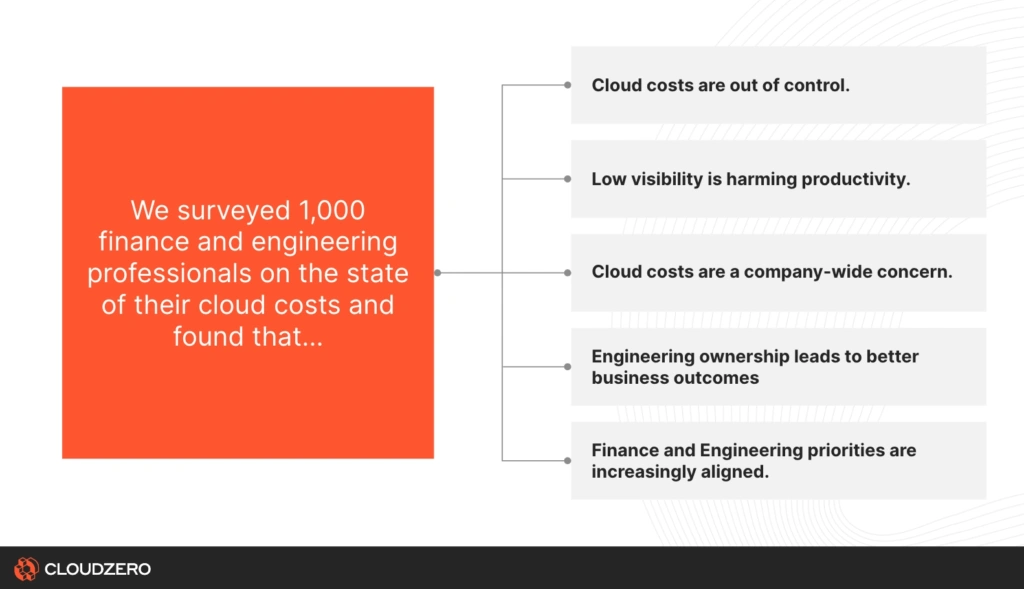
1. Companies are struggling with cloud costs skyrocketing out of control
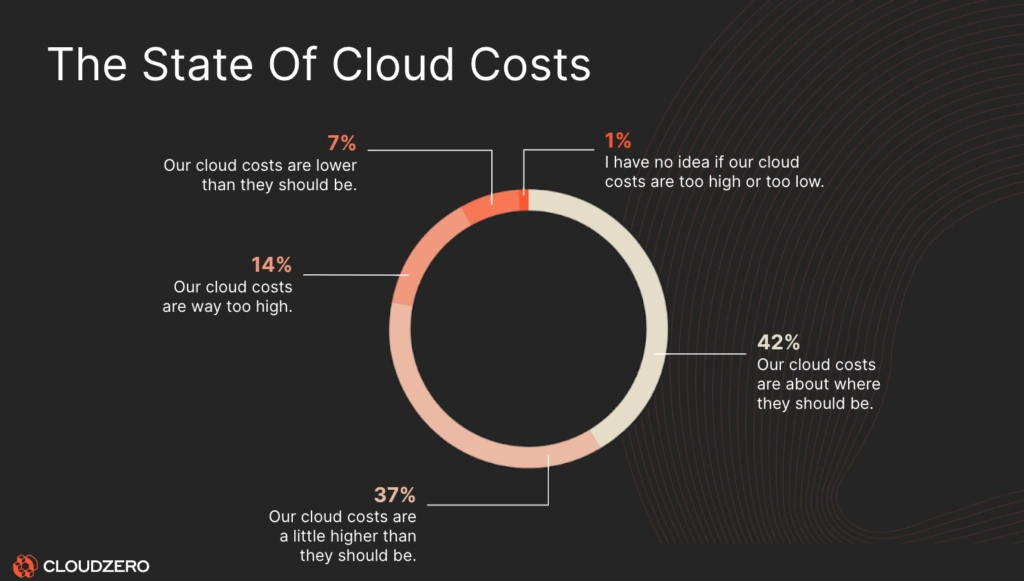
2. Low-cost visibility impairs productivity
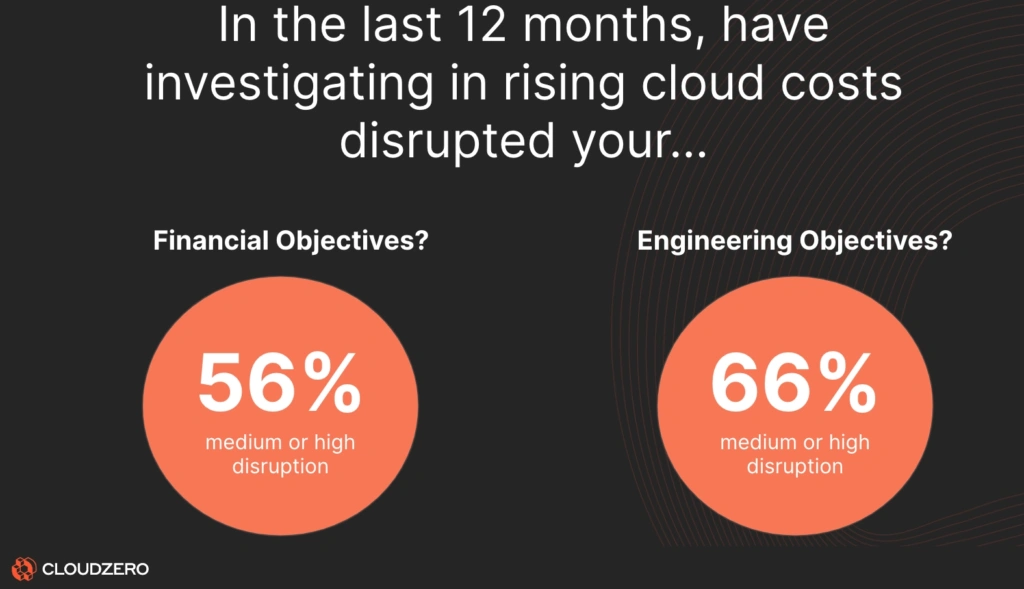
3. Cloud costs are a concern for everyone in the company — especially when it comes to job security
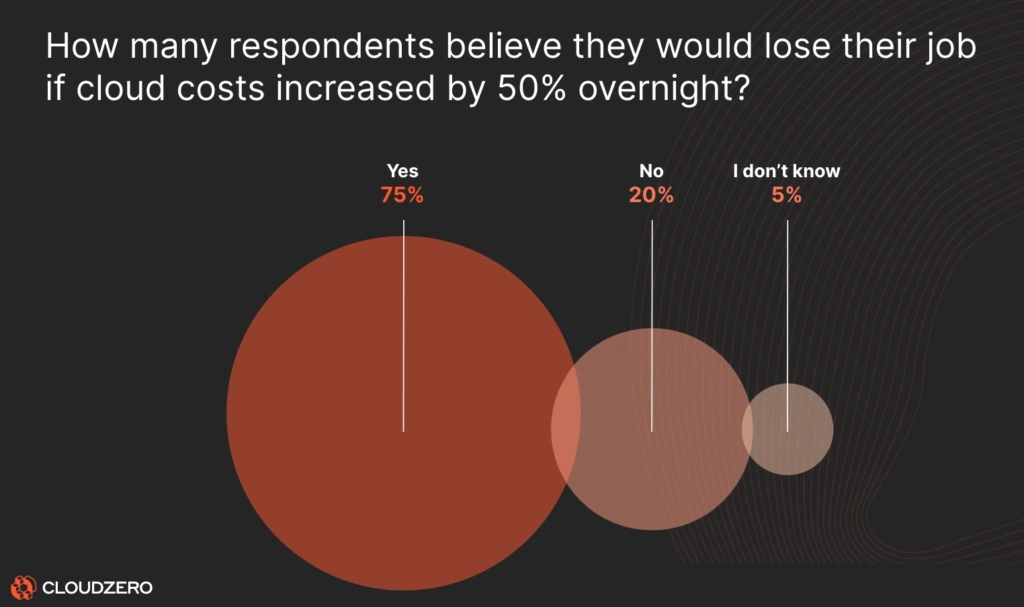
4. Companies that allow engineers to take ownership of costs perform better
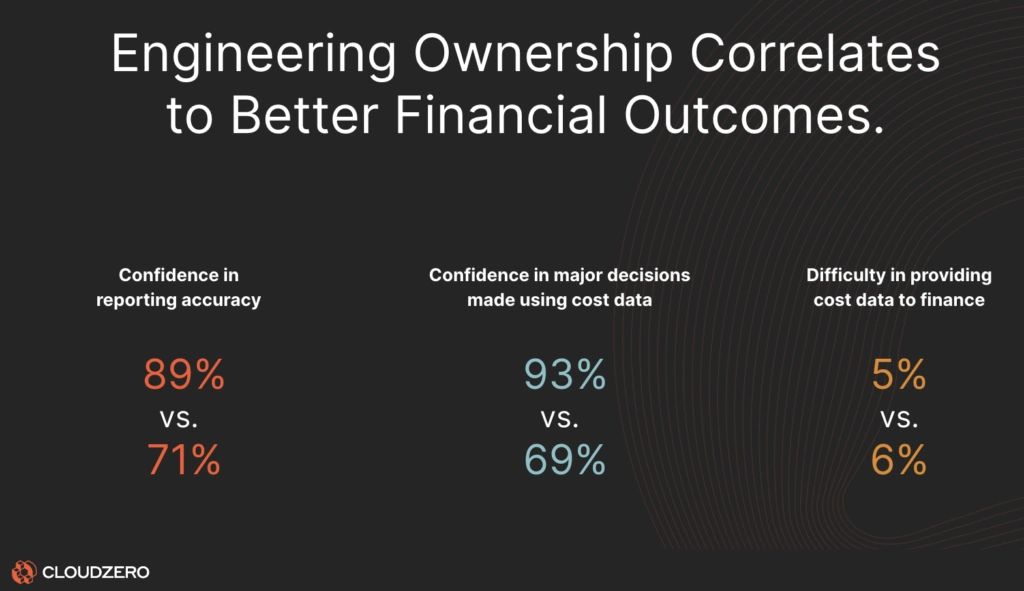
5. Finance and Engineering priorities are aligned more often than you might think
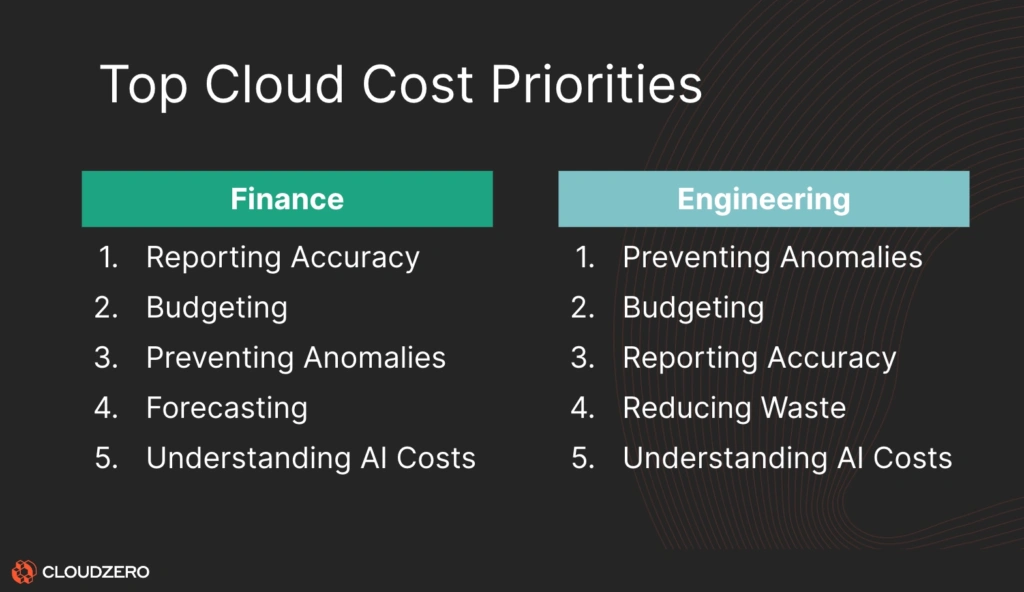
What do these findings mean?
Cloud costs still feel overwhelming for most business leaders
Bill suspects that companies have so much trouble keeping cloud costs under control because these costs are incredibly complex. Unfortunately, most tools companies are using to manage them either don’t give users the data they need or they don’t provide data quickly enough to be useful.

Dan agrees, adding that cloud costs are typically one of the biggest expenses a company faces, second only to personnel costs. Because cloud costs are so large and so complicated, companies don’t often have a set method for finance to approve expenses.
Instead, engineers build what they feel needs to be built with little financial guidance, and then costs are set in stone by the time the company receives the cloud bill.

Employees are feeling pressure to perform well — but lack the tools to do so
Since there is no concrete way to approve and control cloud costs, many workers have an understandable fear of presenting bad news to their superiors. This sentiment is reflected by the 75% of survey respondents who worried that they could lose their jobs if cloud costs were to suddenly spike 50% overnight.

The pressure to control cloud costs and the lack of cost visibility results in wasted time for a huge number of survey respondents
Workers spend so much time investigating the cause behind rising cloud costs, they’re not able to fully focus on the parts of their jobs that make them valuable. This is another reason many people may fear losing their jobs if they lose the battle against cloud costs.
Engineering objectives are most frequently put on hold, with 66% of respondents saying they’ve experienced a medium-to-high level of disruption to their functionality from trying to track down major drivers of cloud costs.
Financial objectives also saw a 56% rate of significant disruption. This means both finance and engineering employees see cloud costs as a high priority that needs to be addressed. On top of that, nine out of ten people feel low cost visibility affects their ability to meet their cost goals.
Bill admits that this problem is so prevalent, even CloudZero isn’t immune:

Dan adds that this struggle to balance costs can severely impact a company’s growth.
Not only are employees wasting time trying to understand snowballing cloud costs when they could be innovating, but the constant upheaval also robs the finance team of their ability to help the company find financial leverage that leads to consistent, proportional growth over time.
However, the news isn’t all bad
We’ve seen a striking improvement in how many people, company-wide, have begun to care about cloud costs.
In the old days, cloud costs were mostly a burden shouldered by C-suite executives and finance leaders who set the budget and asked pointed questions of the engineering team whenever a project went over that budget.
These days, cloud costs appear to be a company-wide concern.
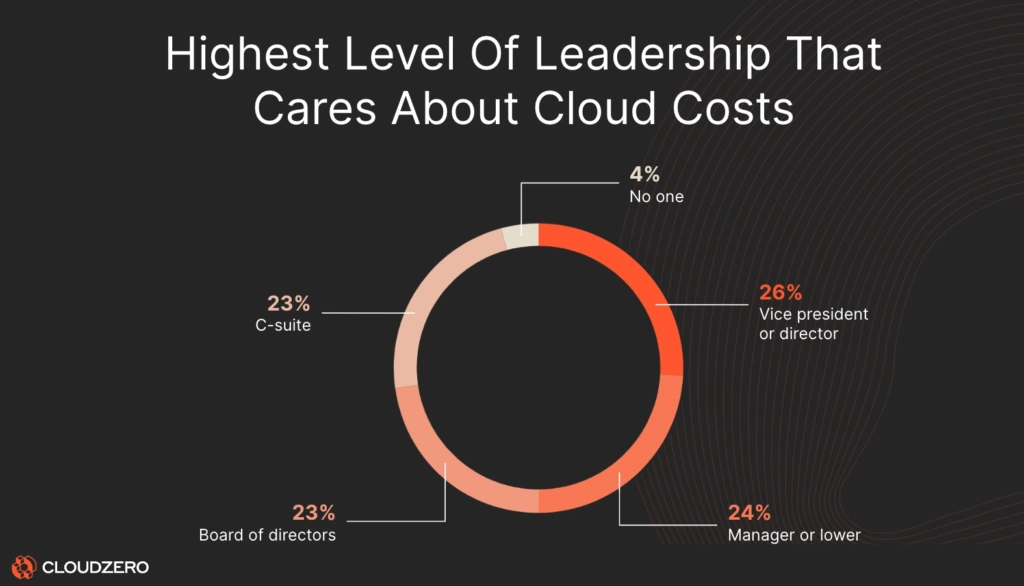
Engineers are increasingly becoming part of the equation. That’s great news, because the data shows this to be true: Companies that provide cost visibility to the whole team and that allow engineers to take ownership of their cost contributions fare better in the long term.
How can you use this information to achieve better results for your business?
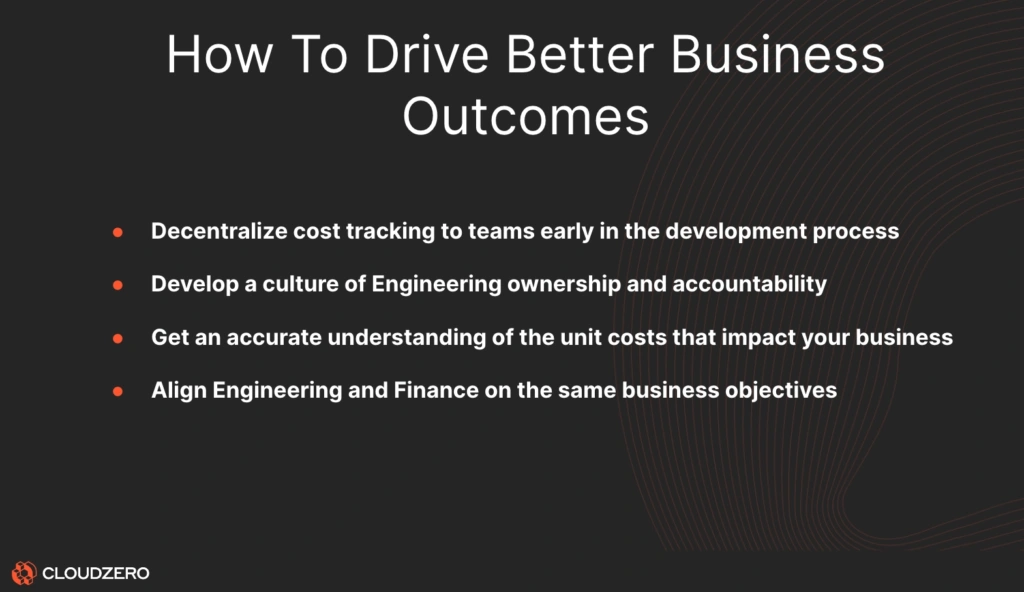
One of the most important things you can do is get your engineers involved in the cloud cost conversation.
Companies that use engineering-led optimization tactics have better business outcomes.
Engineers who take ownership over their costs make smarter build decisions, forecast the results of major business decisions more accurately, and give the finance team more robust financial reports, which leads to better budgeting in the future.

However, you can’t simply place responsibility on your engineers’ shoulders without giving them the means to understand and control their cost contributions.
First you must provide visibility into cloud costs. Engineers need to see how much they’re spending, how much money goes into fueling which resources, and how infrastructure changes can completely alter the cloud cost landscape.

Bringing engineers into the fold—and giving them the tools and visibility they need to take charge of costs — keeps the team more aligned with the company’s financial goals.
When Finance and Engineering work together in harmony, their priorities line up harmoniously as well. Both teams care about accurate reporting of costs, preventing cost anomalies, precise budgeting, and managing costs related to growing (and naturally expensive) fields like AI.
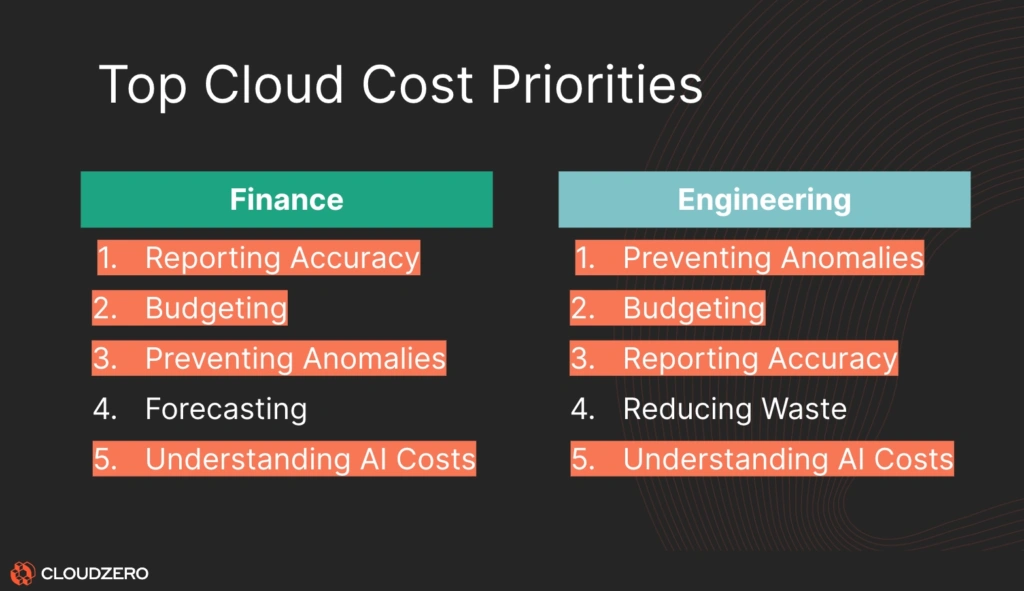
Keep in mind as you progress that there is a difference between reducing costs and optimizing costs.
Even when your spending is optimal, it still may increase month over month. You don’t necessarily need to see a smaller monthly expenditure in order to be successful.
In fact, the argument could be made that your costs should grow over time.
What matters is that your growth in costs is proportional to the growth in your business. If you’re onboarding new customers left and right and spending more to support those customers, you may not actually have the spending problem you think you do.
To distinguish the difference, you’ll need a way to measure the unit costs of different aspects of your business.
This is a struggle for many SaaS companies. Almost a quarter of survey respondents (22%) reported they have no idea what the unit costs might be within their businesses.
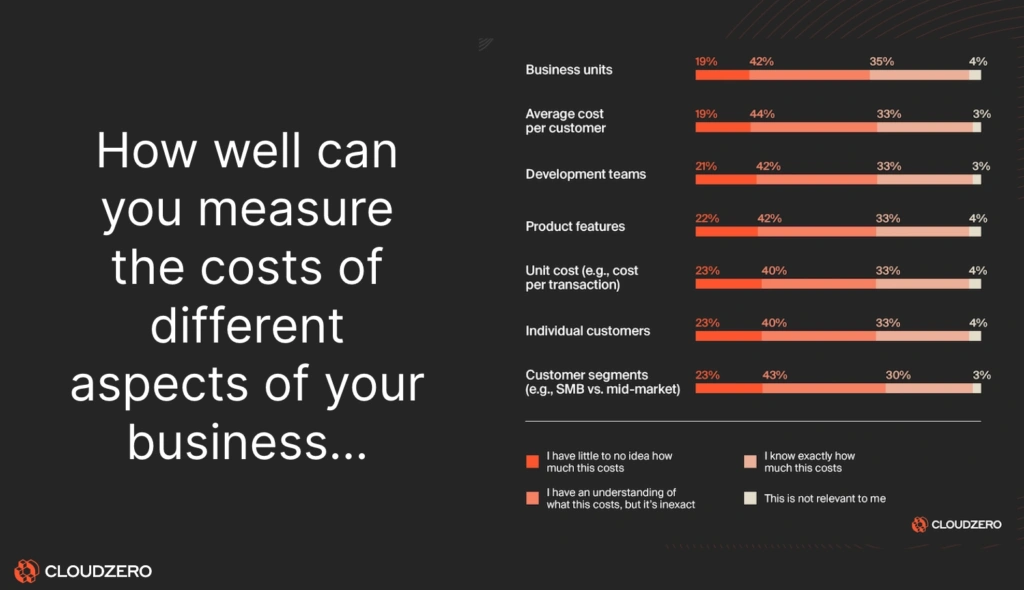
However, it’s these unit costs that allow you to truly understand where your money is going and how you can make the most impact on optimizing your spending.
This makes your cost visibility tools crucial to your company’s success in managing cloud costs. If you can’t measure unit costs in granular detail, you’re likely leaving money on the table.
If you’re in this boat, don’t worry. Bill explains how the CloudZero platform was designed to solve this visibility problem once and for all:

Dan adds several more details about how measuring unit costs can make or break a company’s cloud cost optimization strategy:

In short, with CloudZero, you’ll be able to keep track of your costs per customer, per product, per feature, or any other unit that makes sense in your business context. That means you can make informed decisions when it comes to pricing your products, organizing service tiers, choosing infrastructure for future projects, and any other move you might be considering.
Want To Learn More About Cloud Cost Trends In Businesses Like Yours?
We encourage you to give the full webinar a listen! The highlights above give you a taste, but there’s no way to fit forty-five minutes of great content into one article. Plus, if you have questions as you listen, it’s possible someone else has already asked! Tune in to hear the team answer questions from the audience toward the end of the session.
With that said, you can always feel free to contact CloudZero directly if you need to ask something we haven’t already covered.
 , and we’ll run through what you need to know about managing cloud costs for your business.
, and we’ll run through what you need to know about managing cloud costs for your business.








